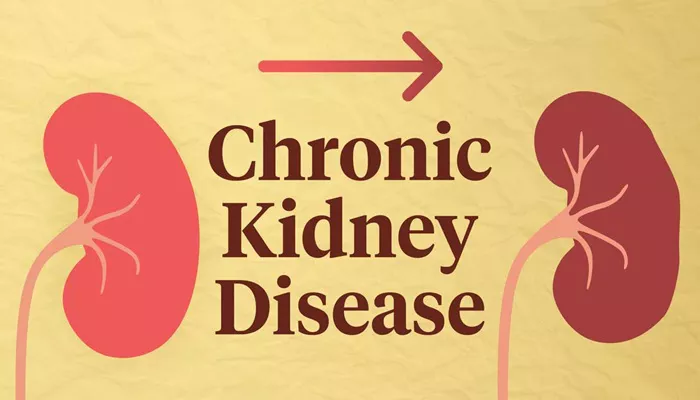Dyslipidemia, characterized by abnormal lipid levels in the blood, is common among patients with chronic kidney disease (CKD). The management of dyslipidemia in this population is crucial, as it plays a significant role in the progression of cardiovascular diseases. This article explores the treatment strategies for dyslipidemia in patients with CKD, emphasizing lifestyle modifications, pharmacological interventions, and monitoring.
What Is Dyslipidemia And Chronic Kidney Disease
Chronic kidney disease affects the kidneys’ ability to filter blood, leading to a buildup of waste products and imbalances in various bodily functions. Dyslipidemia in CKD often manifests as elevated triglycerides, decreased high-density lipoprotein (HDL) cholesterol, and altered low-density lipoprotein (LDL) cholesterol levels. These lipid abnormalities contribute to increased cardiovascular risk, which is already heightened in CKD patients.
Importance of Treating Dyslipidemia
The relationship between dyslipidemia and cardiovascular disease is well-established. In patients with CKD, managing lipid levels can help reduce the risk of cardiovascular events such as heart attacks and strokes. Treating dyslipidemia can also slow the progression of kidney disease. Therefore, early identification and treatment are vital.
Lifestyle Modifications
1. Dietary Changes
A heart-healthy diet can significantly impact lipid levels. Recommendations include:
Low Saturated Fat: Reduce intake of saturated fats found in red meat, full-fat dairy products, and certain oils.
Increase Omega-3 Fatty Acids: Include fatty fish (like salmon and mackerel) in the diet to help lower triglyceride levels.
High Fiber Intake: Foods rich in soluble fiber, such as oats, legumes, fruits, and vegetables, can help lower LDL cholesterol.
Limit Sugars and Refined Carbohydrates: Avoid sugary drinks, pastries, and processed snacks, which can elevate triglyceride levels.
2. Physical Activity
Regular physical activity is essential for maintaining a healthy weight and improving lipid profiles. Aim for at least 150 minutes of moderate-intensity aerobic exercise per week. Activities like walking, swimming, or cycling can be beneficial.
SEE ALSO: Which Is Safer, Atorvastatin or Rosuvastatin?
3. Weight Management
Maintaining a healthy weight is crucial for managing dyslipidemia. Weight loss can lead to improvements in lipid levels, particularly in overweight or obese patients.
4. Smoking Cessation
If applicable, quitting smoking can improve cardiovascular health and positively affect lipid levels. Support and resources should be provided to patients wishing to quit.
Pharmacological Interventions
When lifestyle modifications are insufficient to manage dyslipidemia, pharmacological treatment may be necessary. The choice of medication should consider the stage of CKD and potential drug interactions.
1. Statins
Statins are the first-line treatment for managing elevated LDL cholesterol in most patients, including those with CKD. They work by inhibiting cholesterol synthesis in the liver and have additional cardiovascular benefits. In CKD patients, the following considerations apply:
Dosing Adjustments: Patients with moderate to severe CKD may require dosage adjustments due to reduced renal clearance.
Monitoring for Side Effects: Monitor for muscle pain, liver function abnormalities, and other side effects, especially in those on high-dose statins.
2. Ezetimibe
Ezetimibe can be used alone or in combination with statins to further lower LDL cholesterol levels. It works by reducing cholesterol absorption in the intestines. It is generally well-tolerated and does not require significant adjustments in CKD.
3. PCSK9 Inhibitors
For patients who cannot achieve lipid goals with statins and ezetimibe, PCSK9 inhibitors (such as alirocumab and evolocumab) may be considered. These medications can significantly lower LDL cholesterol but are more expensive and typically reserved for specific cases.
4. Fibrates
Fibrates are effective in lowering triglyceride levels but must be used cautiously in patients with CKD due to the risk of adverse effects, including muscle toxicity. They may be considered in select patients with severely elevated triglycerides.
5. Niacin
Niacin can raise HDL cholesterol levels but is not commonly used due to potential side effects and limited evidence of cardiovascular benefits in CKD patients.
6. Omega-3 Fatty Acid Supplements
Prescription-strength omega-3 fatty acids can help lower triglyceride levels. These may be beneficial for patients with significantly elevated triglycerides and who have not responded to lifestyle changes or other medications.
Monitoring Lipid Levels
Regular monitoring of lipid levels is essential for assessing treatment efficacy and making necessary adjustments. The following guidelines can be followed:
Initial Assessment: Perform a comprehensive lipid profile at the time of CKD diagnosis or when dyslipidemia is suspected.
Follow-Up: Recheck lipid levels 4-12 weeks after initiating or adjusting treatment, then every 6-12 months once stable.
Assessing Progression: Monitor renal function, as worsening CKD may require adjustments in lipid management.
Considerations for Advanced CKD And Dialysis Patients
Patients with advanced CKD or those on dialysis may have different lipid profiles and treatment considerations:
Dialysis Impact: Lipid levels may be altered in dialysis patients; for example, HDL levels may appear artificially low. Careful interpretation of lipid profiles is essential.
Statins in Dialysis: Current guidelines recommend against routine use of statins in patients on dialysis due to limited evidence of benefit. However, individualized assessment may lead to use in certain high-risk patients.
Focus on Cardiovascular Health: Emphasize the importance of overall cardiovascular risk reduction through lifestyle modifications and treatment of other risk factors, such as hypertension and diabetes.
Conclusion
Managing dyslipidemia in patients with chronic kidney disease requires a comprehensive approach that includes lifestyle modifications, pharmacological interventions, and regular monitoring. Early identification and treatment can significantly reduce cardiovascular risk and improve overall health outcomes. Collaboration among healthcare providers, patients, and caregivers is essential to achieving optimal management of dyslipidemia in this vulnerable population.
Related topics:
- Which Statin Drug Is The Safest?
- What Is The First Treatment for Hyperlipidemia?
- How Does Hyperlipidemia Cause Hyponatremia?

